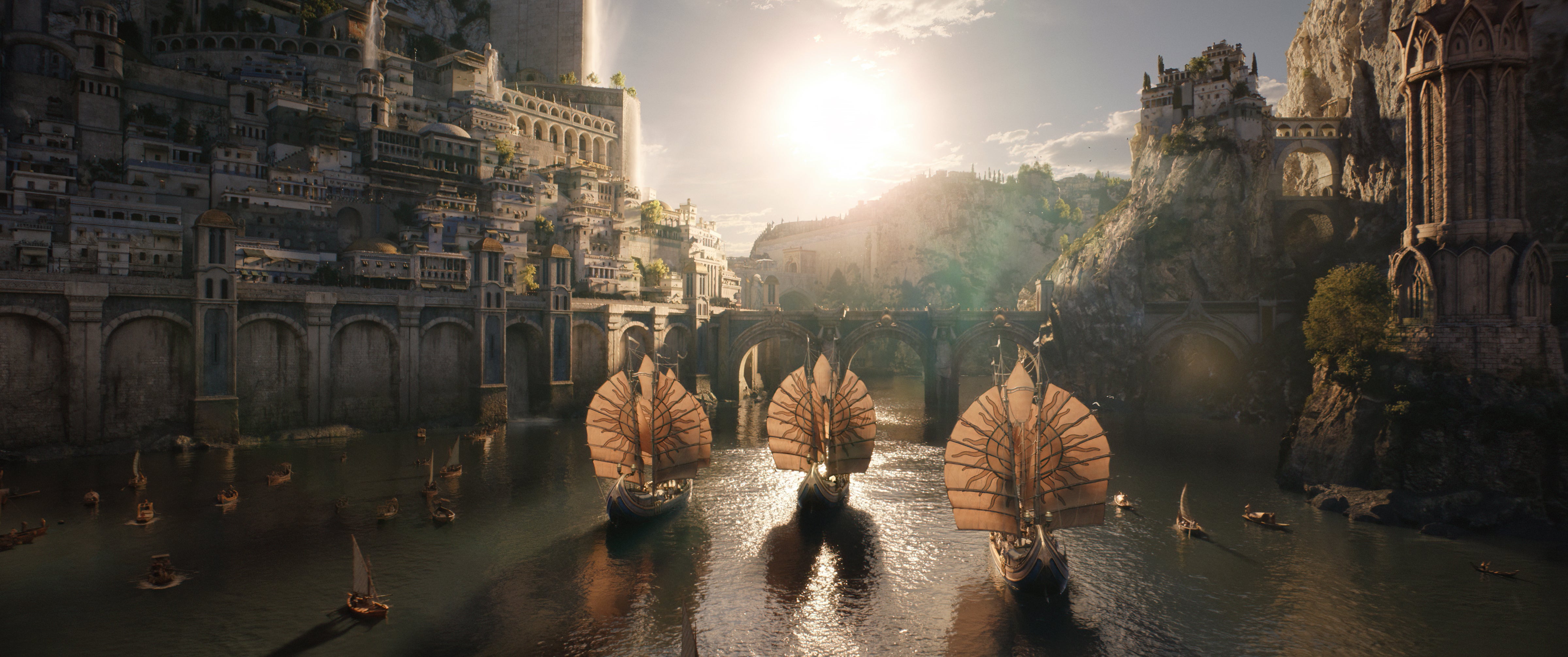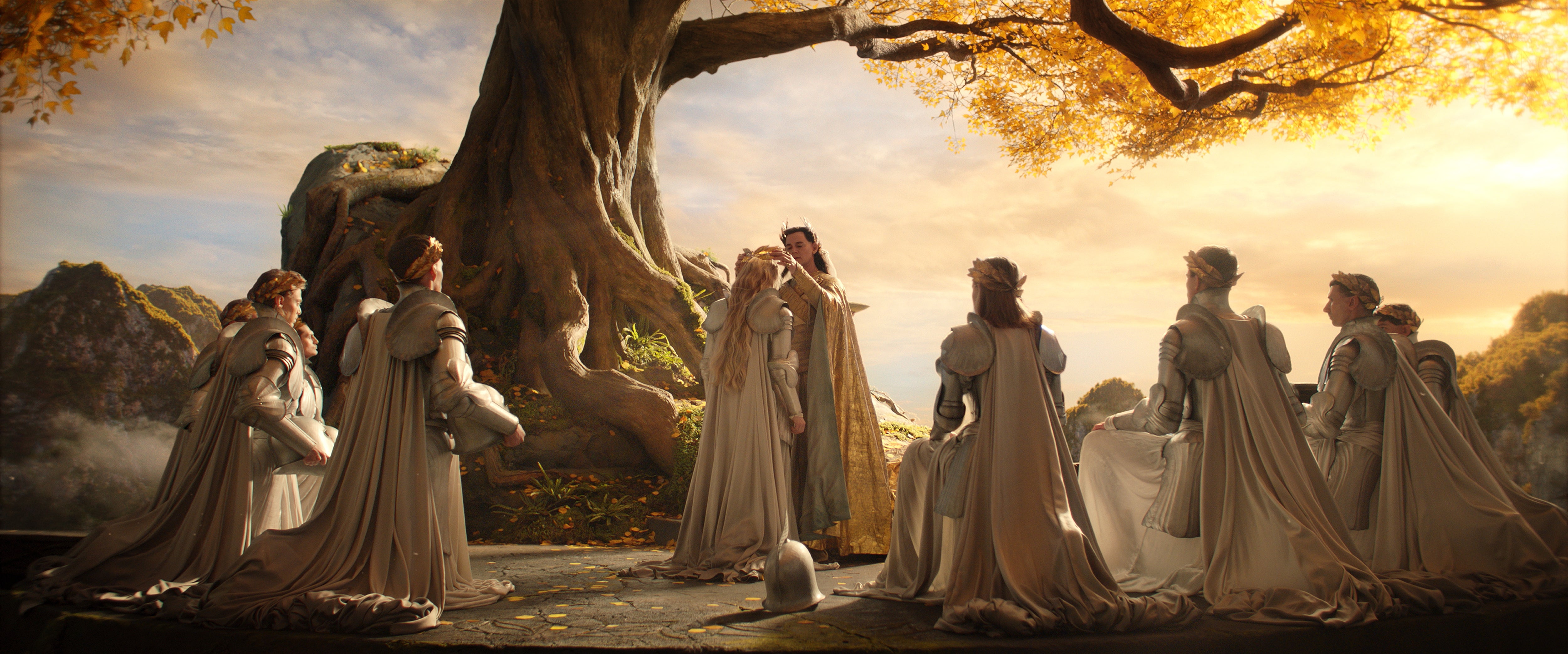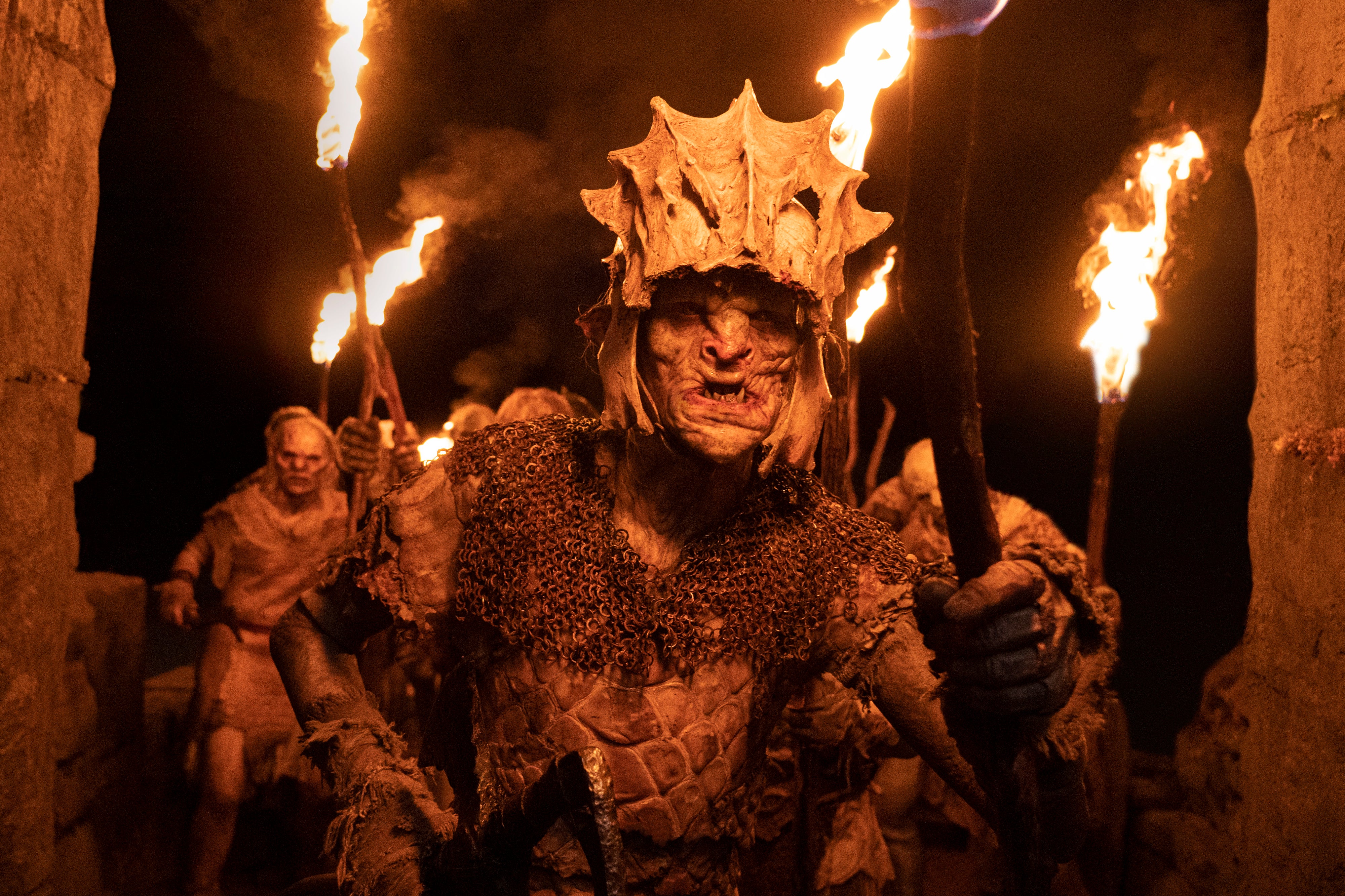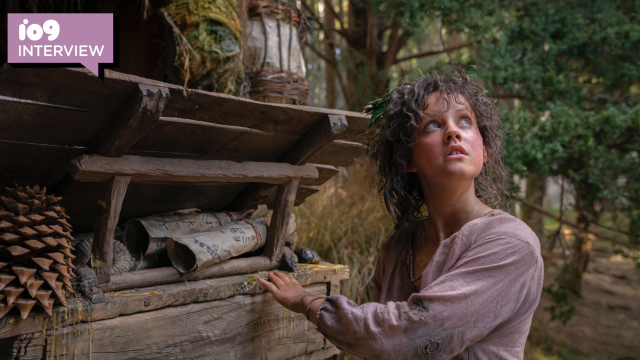Pop culture’s next journey into Middle-earth is almost upon us, in the form of Prime Video series The Lord of the Rings: The Rings of Power. At a recent press day for the series, io9 talked to showrunners JD Payne and Patrick McKay and executive producer Lindsey Weber about diving back into J.R.R. Tolkien’s world — and why now was the right time to do it.
Cheryl Eddy, Gizmodo: So the show deals with a period in Lord of the Rings history and Tolkien’s work that is so incredibly vast, with events that take place over centuries. How did you guys decide where exactly to start in the Second Age?
J.D. Payne: What we did is is look at the Second Age and see that there are these sort of several pillars of storytelling and events. It’s the forging of the Rings of Power. It’s the rise of the Dark Lord Sauron. The epic tale of Númenor. And then finally, the last lines of Elves and men. And as you pointed out, those happened over the course of several centuries. So really, there was a fork in the road that as storytellers we faced early on, where we could tell one story, and then have a bunch of characters die off, and then bring in another story. But we said, you know, we really want to tell one story. So what we decided was we were going to compress the timeline and start sort of in the middle of the Second Age; we brought some events up and [moved] some back. We worked very closely with the Tolkien estate to make sure we had their blessing to do that as one of the big liberties that we took in adapting this from one form — which is appendices with sort of timelines and dates — and into the form of televised, serialized, long-form storytelling.
Patrick McKay: We wanted the show to be dramatic and surprising and hopefully delightful. And in chasing that, we felt that each of these worlds and each of these characters should be introduced at a time of enormous change in their worlds. So you have Nori, played by Markella Kavenagh, who’s a Harfoot. She’s like a proto-Hobbit many thousands of years before the Shire and Harfoots have rules for what they do and don’t do. At the end of the first episode, a mysterious being lands quite literally in her backyard. And that’s going to upend everything. Númenor, which you see in the third episode, you find at a tipping point in its politics and culture. And you introduce them at the moment that Galadriel, an Elf, returns to the island and is going to set all those conflicts simmering. We meet the Dwarves when an Elf comes in, and then you find out that the Dwarves are in the middle of a great change in their society. And the arrival of an Elf is sort of upending the way the established order is there. We’ve tried to do that across the worlds, and we felt that the narratives in this era of Middle-earth history are so rich and dramatic and powerful that all we had to do is lay them alongside each other — and hopefully we’re starting in a really dynamic and interesting place.

io9: Why do you think that now is the right time for audiences to return to Middle-earth?
Payne: It’s interesting. We started working on this four and a half years ago, so it’s been quite a long time. And when we set out, we couldn’t have imagined all the challenges that people would face in even just that that time period. We’ve been through a global pandemic. We’ve had economic distress. There has been political and social unrest. There have been military conflicts. There’s been all kinds of challenges across the world. And what’s beautiful about Tolkien is considering where this material was really born — the first sort of kernels of Middle-earth started to develop when he was a young man, when he was a soldier fighting in the trenches of World War I. By the time he was just in his early twenties, he had lost several of his best friends and witnessed some of the biggest horrors of the 20th century.
What’s amazing about him is that unlike some of his literary peers in the Lost Generation, he didn’t write works of alienation and fragmentation. He wrote a fairy tale. And it was one that really acknowledged and didn’t sugarcoat any of that pain. It takes it you there — it takes you to places where people die. People go evil. There’s true tragedy in Tolkien in the greatest sense of the word. But at the same time, there’s always that one ray of light, or the one star shining in the sky that says “Just keep walking.” There’s hope, even passing through great pain, there is still hope for something good at the end. I think right now, at a time when so many people are passing through so many, both large-scale and personal pains, Tolkien has something really to offer everyone.
io9: The series has so many characters spread across this vast world. Do you think that audiences are ready for the huge scope of this show?
Lindsey Weber: I hope audiences are ready. I also hope they’re a little bit shocked. We tried to capture the grandeur of Middle-earth and make something beautiful. Beauty is so important in Tolkien; it has literal power. And we tried to capture some of that on screen and bring something special into people’s homes that you can’t get anywhere else. Yes, making all that beauty every day was a real challenge as we tried to bring all these worlds to life and shoot them all at the same time. Not just empty sets, but inhabited, populated, lived-in worlds. You know, the dirt under the fingernails was just as important to us as the pearls and gems in the crown and, you know, the water lapping at the dock and all of it. There is so much love and care that has gone into every frame of it. So much was handmade. You can’t just buy things from Middle-earth. Everything has to be made by hand, by incredible artists and craftspeople. Everything had to be made in-world for each of these five or six worlds in our show. We have a couple of human worlds, including, of course, the great island kingdom of Númenor, and the South Lands, which has the, as Tolkien called them, the low men of Middle-earth. We have the Dwarven world of Khazad-dûm. We have the Harfoot world, which involves a migration, so sort of a series of worlds. We have an orc environment that really feels like its own world. We’ve got a Dwarven and Elven combo world. It just keeps on going.

McKay: We really wanted to overwhelm people. We wanted to give people something that — hopefully, if you enjoy the show, you can watch again and appreciate a whole new layer to it. We like layered storytelling. We like ambitious storytelling. And we felt that, you know, that was Tolkien and we had to honour it.
io9: What was it like trying to strike the balance between that huge scope and then honing in on those threads that matter from episode to episode?How did you kind of come up with those smaller stories that are going to raise the stakes in that huge world?
Payne: So obviously, Tolkien’s world is vast. Middle-earth is a humongous place filled with many different strange creatures. But at its core, Lord of the Rings is about relationships. It’s about individual struggles. It’s about friendships. It’s about families. And so we reckoned that the way in for audiences, whether they’re fans or non-fans, was really going to be these characters … We felt that Tolkien’s storytelling is emotional at its core and what makes it emotional are those relationships. And so — sure, the world hopefully has this great scope, but what’s going to really give it something worth going back to is the emotional scope. And we worked very hard on that, as much as anything else.
Weber: It’s true. Of course, none of the beauty and the spectacle matters unless the little human moments ring true and feel authentic and feel like Tolkien. And that’s what we worked really hard for.

io9: We recently had the House of the Dragon premiere on HBO, and that Game of Thrones-inspired sort of “dark fantasy” has really persisted in pop culture. Netflix’s The Witcher is another example. What do you think it is about Tolkien stories that set Rings of Power apart from this current wave of grounded and gritty fantasy?
Payne: Well, really it’s those universal and timeless themes that Tolkien goes back to. It’s the idea that underdogs and little people can make a big difference. The idea that friendship and staying true and loyal to your companions in a fellowship can overcome even the armies of evil. It’s the corrupting influence of power, and it’s people struggling with their goodness in addition to people struggling with evil. It’s the beauty of the natural world and the importance of preserving it. It’s all these timeless themes that I think resonate with people, and that’s the reason people keep going back to Tolkien again and again.
You know, he said that he didn’t want to make a story that was allegorical — where you could point and say, these people are clearly representative of this group, or this individual is code for that individual. He wanted to make something that wouldn’t just resonate with people of one generation, but people of all generations. I think there’s a reason why people have been going back to Middle-earth again and again and again and again: there’s something special and unique that you get there that you can’t find anywhere else. In addition to trying to stay true to Tolkien’s legendarium and adapt it in a way that was respectful and and delightful, what we really wanted to capture was that special feeling of Middle-earth. If we can give just a little bit of that to audiences, then that’s something we’ll be very excited to be able to do.
The Lord of the Rings: The Rings of Power hits Prime Video on September 2.
Want more Gizmodo news? Check out when to expect the latest Marvel and Star Wars releases, what’s next for the DC Universe on film and TV, and everything you need to know about House of the Dragon and Lord of the Rings: The Rings of Power.
Editor’s Note: Release dates within this article are based in the U.S., but will be updated with local Australian dates as soon as we know more.
